10 Dwarf Weeping Trees For Small Gardens

This post follows our research editorial guidelines.

Weeping trees add a unique look to any space they are planted in. In fact, adding a dwarf weeping tree can significantly improve your house’s curb appeal. It’s one of the design elements that I was immediately drawn to when looking at the house we live in now. These small trees make me think of my childhood. In the mid-80s, lots of people had them in their front yards because they fit in many different garden designs with smaller lots.
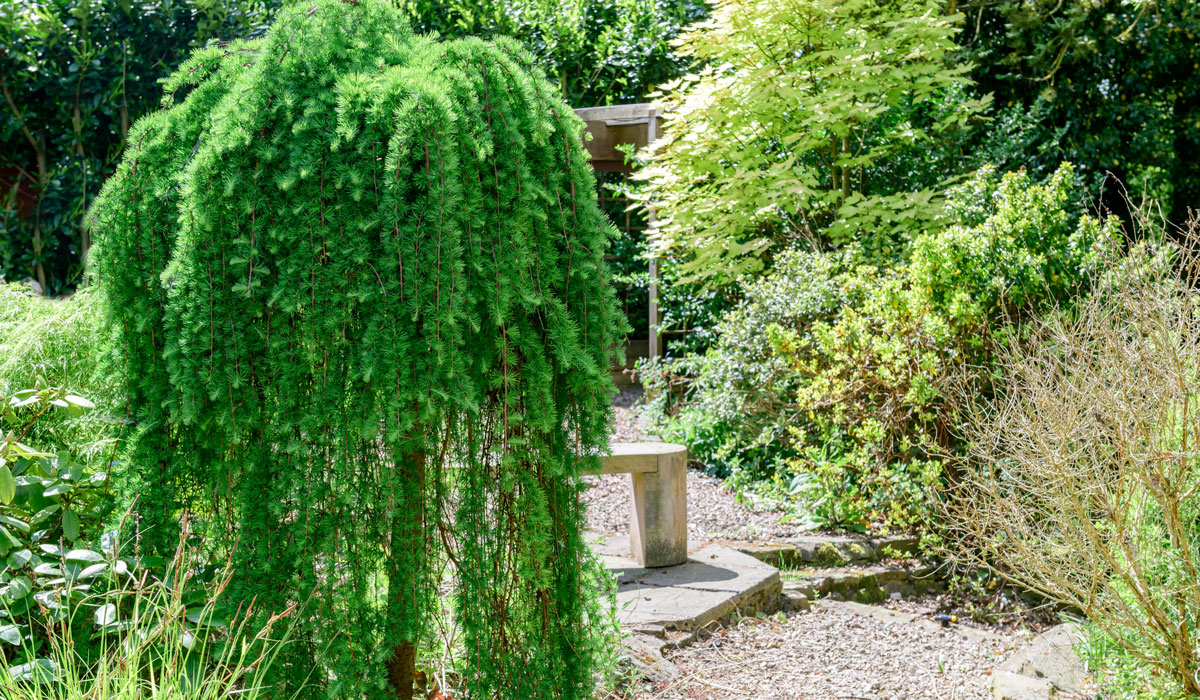
Generally, weeping trees are not as large as upright varieties but can still reach 15-25 feet in height. This means planting them indoors is usually not an option.
However, you can get dwarf weeping trees, which are essentially shorter versions of full-sized weeping trees. These dwarf versions do very well indoors and can also be used in your outdoor landscape if you have a small space to fill or you don’t want to compromise your line of view, combine these trees with some low growing ground covers and you truly have an easy to maintain garden space.
Quickly Find Dwarf Weeping Trees:
Most of the weeping tree variations are cultivars, and the dwarf versions of these trees have been modified by humans to restrict their overall size. These trees are quite resilient and require very little maintenance.
Here are some of the best dwarf weeping tree options to consider for your garden.
1. Weeping Norway Spruce
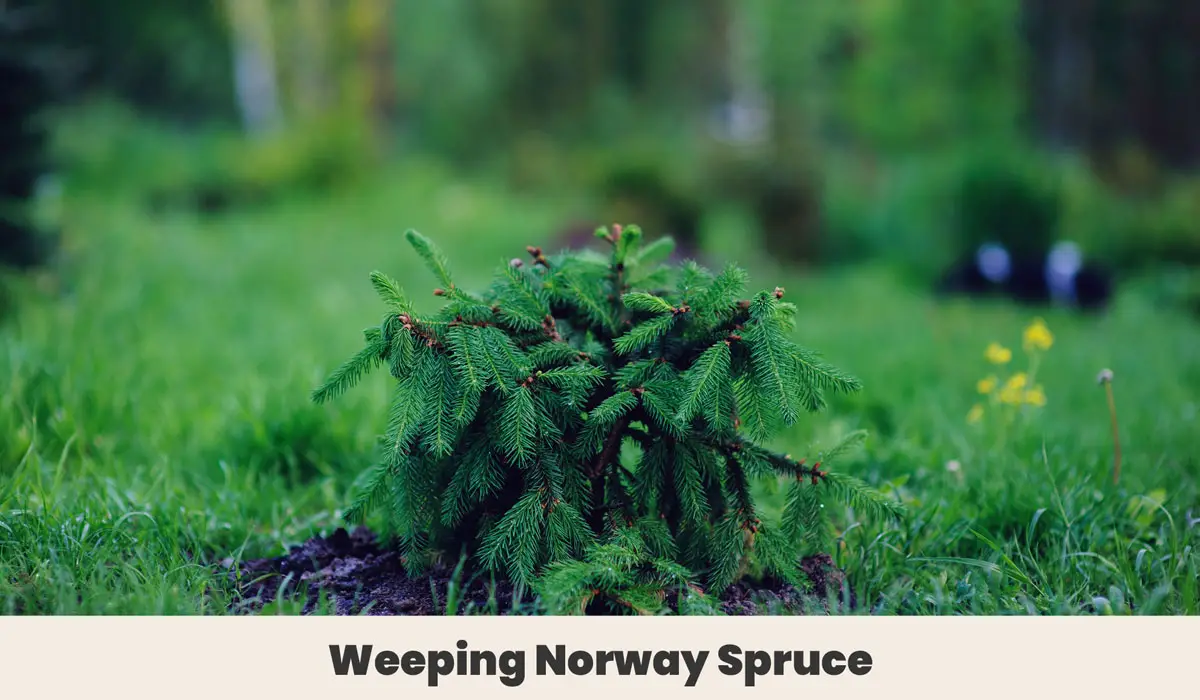
The Norway spruce has branches filled with needles, much like a pine tree. Unlike the pine tree, the Norway spruce is a weeping variety, so the branches hang downwards, and the entire tree tends to drape over the ground. This is a good choice if you want a tree that will cover a lot of open ground.
On the other hand, if you provide the tree with some support in the form of stakes or a fence, it can creep over these objects and develop a more upright posture, so it grows vertically.
This is a very resilient tree, and you don’t have to worry about pests or diseases damaging it. Additionally, the pine needles on the Norway spruce have a very pleasant fragrance, keeping the entire area around the tree smelling fresh.
Plant Growing Details
- Scientific Name: Picea abies
- Growth Rate: Slow to medium
- Native Range: Europe and Asia
- Hardiness Zones: 3-7
- Exposure: Full sun or partial shade
- Soil Needs: Moist, well-drained soil
- Water Needs: Regular watering
- Tolerate: Heavy shade, drought, and air pollution
- Fertilizing Needs: Fertilize in spring with a balanced fertilizer
- Pruning Needs: Prune as needed throughout the year.
2. Weeping White Pine

The weeping white pine is a highly prized variety of weeping trees due to its unique appearance. It has very fine pines on its branches, making it fluffy and nearly fabric-like. It has long branches that weep down to the ground.
The dwarf variety of this tree has more of a mound-like shape and usually grows in irregular patterns. When it reaches its natural height of 4-7 feet tall, it can look a bit like a hedge but rounder and fluffier than a standard hedge.
Plant Growing Details:
- Scientific Name: Pinus strobus
- Growth Rate: Medium
- Native Range: Eastern North America
- Hardiness Zones: 2-8
- Exposure: Full sun or partial shade
- Soil Needs: Well-drained soil
- Water Needs: Moderate watering
- Tolerates: Heavy shade, air pollution
- Fertilizing Needs: Not necessary
- Pruning Needs: Prune once a year in late spring or early summer to maintain the desired shape.
3. Dwarf Weeping Willow

Weeping willows are one of the most popular weeping tree varieties, as well as one of the few weeping trees that are naturally occurring. The dwarf version of the weeping willow tree has different sizes and outlooks.
These dwarf trees typically reach a maximum height of 5-6 feet. They have silvery stems with small golden leaves that are quite thick. The top umbrella of the tree looks like a dense plate of veins with long, thin branches weeping downwards.
Plant Growing Details:
- Scientific Name: Salix babylonica
- Growth Rate: Fast
- Native Range: Eastern Asia
- Hardiness Zones: 4-9
- Exposure: Full sun or partial shade
- Soil Types: Well-draining soil
- Water Requirements: Low to moderate water needs
- Tolerates: Drought, heat
- Fertilizing Needs: Use a balanced fertilizer twice per year.
- Pruning Needs: Prune is needed in late winter or early spring.
4. Weeping Crabapple
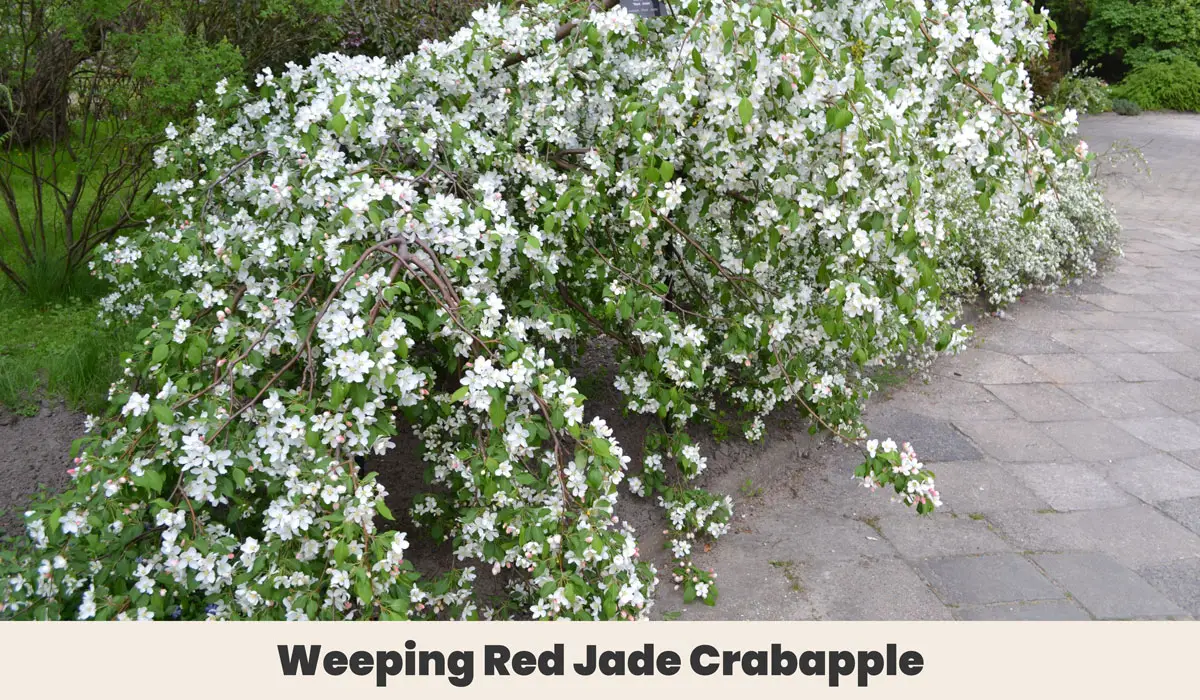
As the name suggests, the crabapple tree is part of the apple tree family which are all part of the Malus genus. Therefore, the crabapple does produce some small fruits, but these are not palatable at all.
However, this is a flowering tree, and its thin weeping branches are covered with white, red, pink, and yellow flowers during the flowering season. While the flowers only last a couple of weeks, they have green foliage and colorful fruits hanging on the tree all year round.
Plant Growing Details:
- Scientific Name: Malus domestica
- Growth Rate: Slow-medium
- Native Range: Central Asia, Europe, North America
- Hardiness Zones: 4-8
- Exposure: Full sun or partial shade
- Soil Needs: Adaptable to a wide range of soil pH levels; prefers sandy, loamy soils.
- Water Requirements: Average water needs; keep the soil slightly moist.
- Tolerates: Heat, humidity, drought, and some diseases
- Fertilizer Requirements: Feed annually with a slow-release fertilizer at the start of spring.
- Pruning Requirements: Prune in early summer to maintain its shape.
5. Weeping Mulberry

The weeping mulberry tree is not only a beautiful tree to look at, but it also provides some delicious fruit. The dwarf variety of this tree will provide much less fruit if any at all, but the good news is that it is edible. The tree itself has an upright posture with dwarf varieties – easily reaching 6 feet in height.
The branches stem from the top of the tree and droop downwards, featuring medium-sized solid green leaves. This is a seasonal tree, so it sheds leaves in the winter, but during the summer months, it has rich and thick foliage.
Plant Growing Details:
- Scientific Name: Morus alba
- Growth Rate: Slow-Medium
- Native Range: Japan, China, Eastern Asia
- Hardiness Zones: 4-8
- Exposure: Full sun or partial shade
- Soil Types: Prefers sandy, well-draining soil
- Water Requirements: Regular watering, especially during dry spells.
- Tolerates: Drought, heat
- Fertilizing Needs: Minimal fertilizing needs; feed annually in spring with a balanced fertilizer.
- Pruning Needs: Prune to shape as desired; remove any sucker growth regularly.
6. Weeping Cherry Tree

This is one of the most beautiful weeping trees you can get. It is commonly found with white flowers, but you can also get varieties that have pink, red, lavender, or purple flowers.
The dwarf version of this tree will grow to be 4-6 feet tall and develop a bushy top where all the flowers are located. It doesn’t have very long branches but as the tree grows, the entire umbrella will start to swoop downwards. With its colorful flowers, it is a vibrant addition to any garden.
Plant Growing Details:
- Scientific Name: Prunus subhirtella
- Growth Rate: Medium
- Native Range: Japan
- Hardiness Zones: 5-8
- Exposure: Full sun or partial shade
- Soil Types: Adaptable to most soils
- Water Needs: Moderate
- Tolerates: Heat and some diseases and pests
- Fertilizing Needs: Light fertilizing in late winter
- Prune or Shape: Prune in winter to remove broken, dead, or diseased branches.
7. Weeping Blue Atlas Cedar
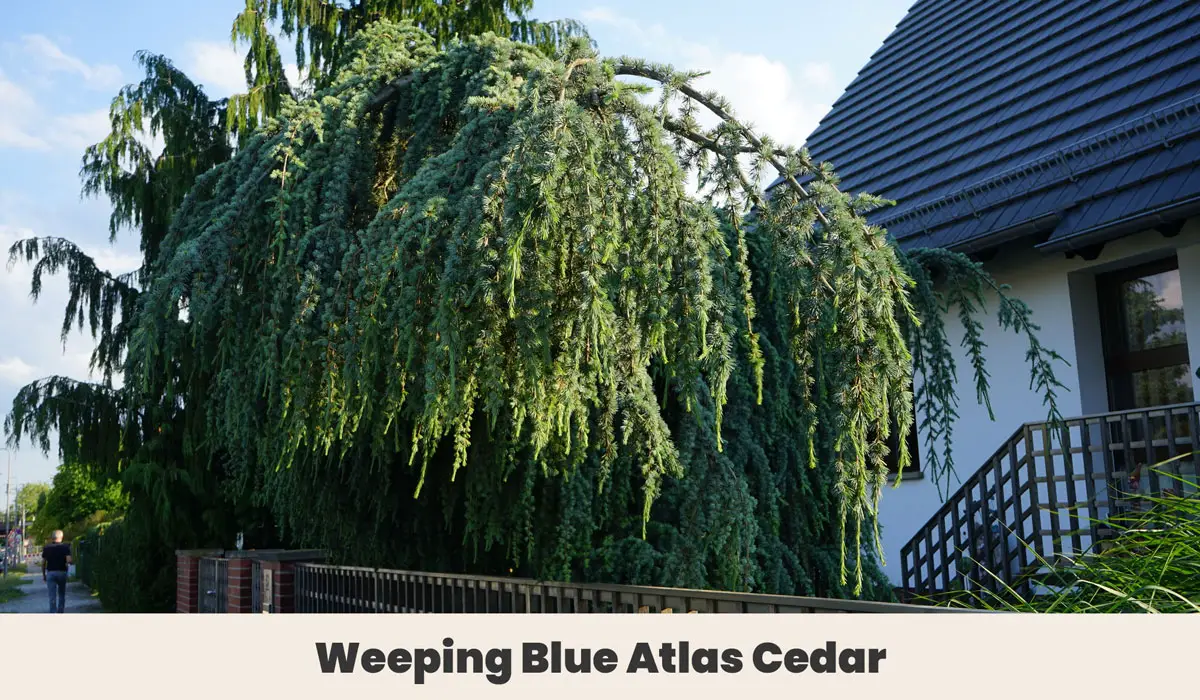
The weeping blue atlas cedar tree has a very dramatic look to it in terms of its structure, and the blueish-gray color only makes it more prominent. The pin needles on this tree grow in small, tight bunches, and they have a bluish-green color to them.
They are also coated with a translucent white sheet which gives the tree a slight gray color when you look at it from afar. This tree can get to about 10 feet tall, but it also spreads out quite wide.
The branches can be 6-7 feet long each, and they will spread horizontally across the landscape. Long stems with pine needles will droop down to the ground from these main branches.
Plant Growing Details:
- Scientific Name: Cedrus atlantica
- Growth Rate: Slow
- Native Range: North Africa
- Hardiness Zones: 6-9
- Exposure: Full sun to partial shade
- Soil Requirements: Well-drained, acidic soil
- Water Needs: Moderate to regular water
- Tolerates: Drought, air pollution
- Fertilizing Needs: Low
- Pruning: To maintain shape, prune in summer after new growth has occurred.
8. Weeping Hemlock
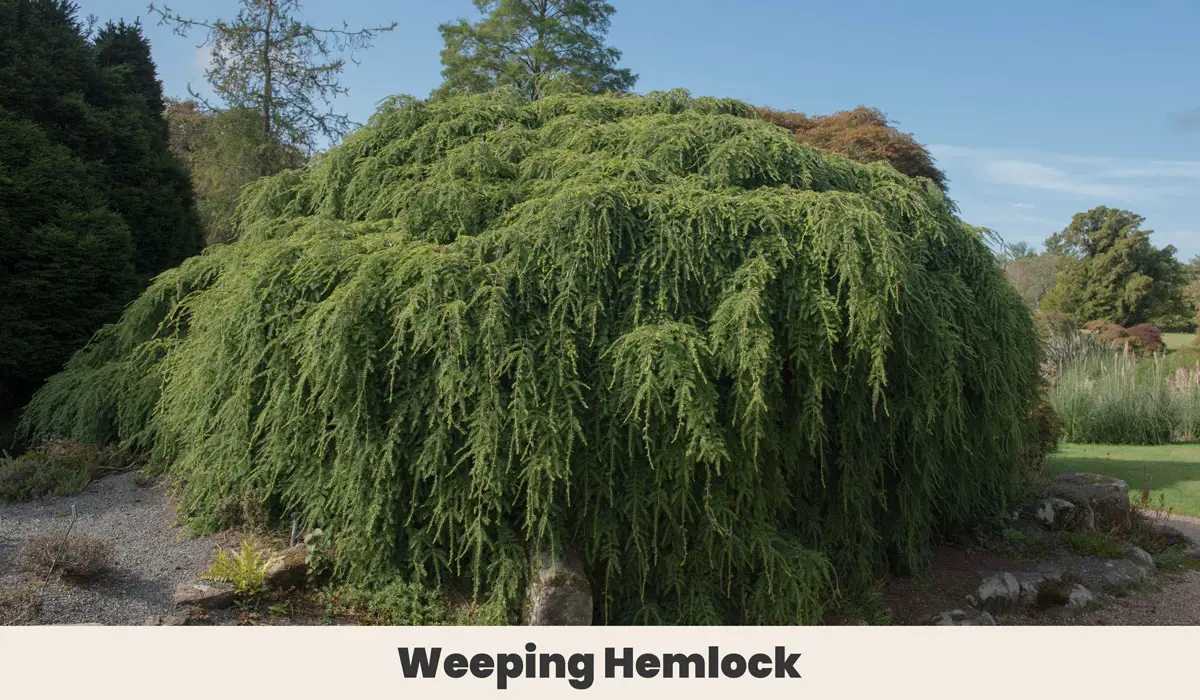
The weeping hemlock is a great choice if you want a windbreak or something that will provide solid cover to some parts of the property. This tree has very small pine needles, but they are so densely packed that they can create a solid structure.
Moreover, the tree develops so that branches layer on top of each other and keep building up in the form of a mound. This tree does not get too tall or too wide, but it is very densely built like a hedge. It has a classic green color and a very gentle and wave-like structure.
Plant Growing Details:
- Scientific Name: Tsuga canadensis ‘Pendula’
- Growth Rate: Slow
- Native Range: Northern America
- Hardiness Zones: 2-7
- Exposure: Full to partial shade
- Soil Type: Adaptable to most soil types but prefers moist, well-drained soils.
- Water Requirements: Low water needs; water only during extended dry spells.
- Tolerates: Deer and drought
- Fertilization: Fertilize in spring with an all-purpose fertilizer.
- Pruning: Very little pruning is required, but it can be done to shape the tree and remove dead branches
9. Weeping Beech Tree
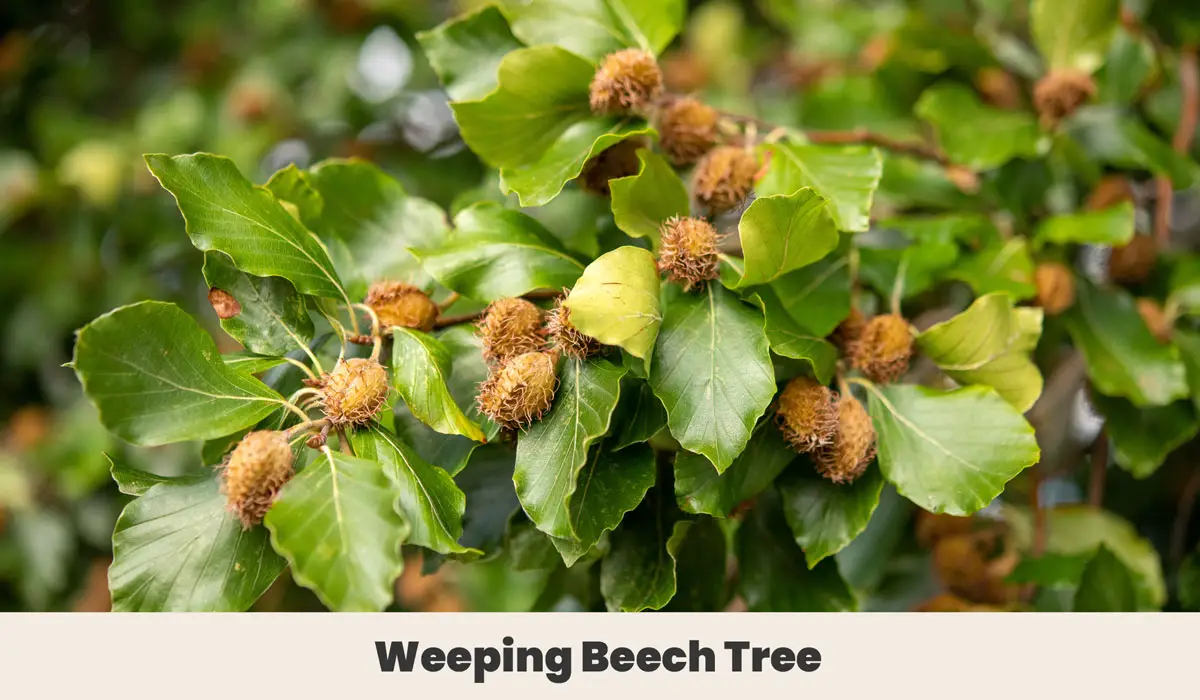
If you’re looking for a standout – a real show-stopper – then the weeping beech tree with its deep purple foliage is a great option. This tree can grow to be 5-8 feet tall, depending on how much ground space the roots have to spread.
You can always plant this in a large pot if you want to limit growth. The foliage on this tree is extremely dense – so much so that you can’t even see the trunk of the tree when it is fully developed and in full flowering season. The leaves also have a glossy finish to them, and when combined with the natural purple color, it creates an amazing visual.
Plant Growing Details:
- Scientific Name: Fagus sylvatica ‘Pendula’
- Growth Rate: Slow to Moderate
- Native Range: Europe
- Hardiness Zones: 4–7
- Exposure: Full Sun
- Soil Requirements: Adaptable; moderately moist to dry, acidic to alkaline soils.
- Water Needs: Moderate amount of water in well-drained soil.
- Tolerates: Moderate drought once established.
- Fertilizing Needs: Fertilize in early spring with a balanced fertilizer
- Pruning Needs: Prune as needed to control size and shape; best done after flowering. Avoid drastic pruning, which can disrupt the natural form of this tree.
10. Redbud Tree
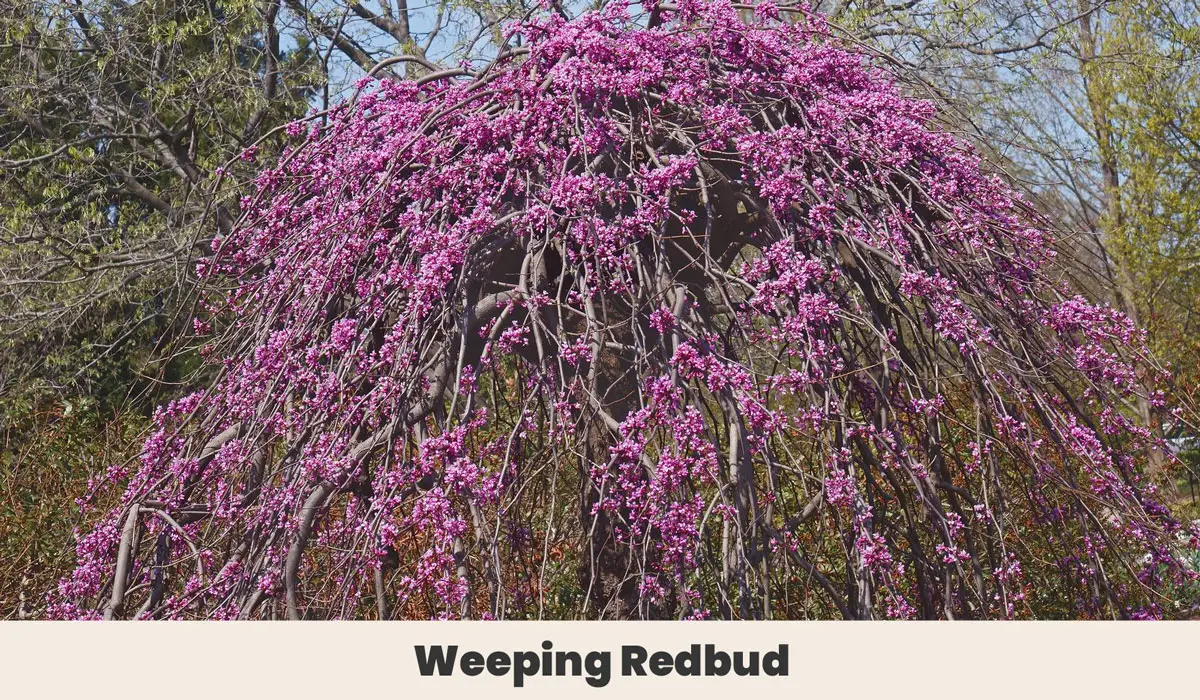
The redbud tree is one of the few dwarf weeping trees that gives you amazing aesthetics in a compact package. The leaves on this tree can be purple, deep red or white. The tree itself grows up to 5 feet tall and has a small umbrella that does not have more than a 4 foot radius.
This is perfect for the small front yards of modern homes. On top of that, this tree doesn’t droop all the way down to the floor, so you still have space to grow other small plants.
Plant Growing Details:
- Scientific Name: Cercis canadensis
- Growth Rate: Medium to Fast
- Native Range: Eastern North America
- Hardiness Zones: 4 – 9
- Exposure: Full Sun to Partial Shade
- Soil Requirements: Adaptable to a variety of soil types
- Water Needs: Moderate
- Tolerates: Drought
- Fertilizing Needs: Lightly fertilize twice a year (spring and late summer) with a balanced fertilizer.
- Pruning Needs: Little to no pruning is needed.
Final Thoughts
Dwarf weeping trees give your garden both a pop of color and a very unique foliage. All these trees are very low maintenance, and you don’t need to do much to get them going. However, you will need to be patient with some varieties as they can take several years to grow and reach their final stage.
They are definitely worth the wait, though, once their signature style emerges and they show their eclectic and fragrant colors.

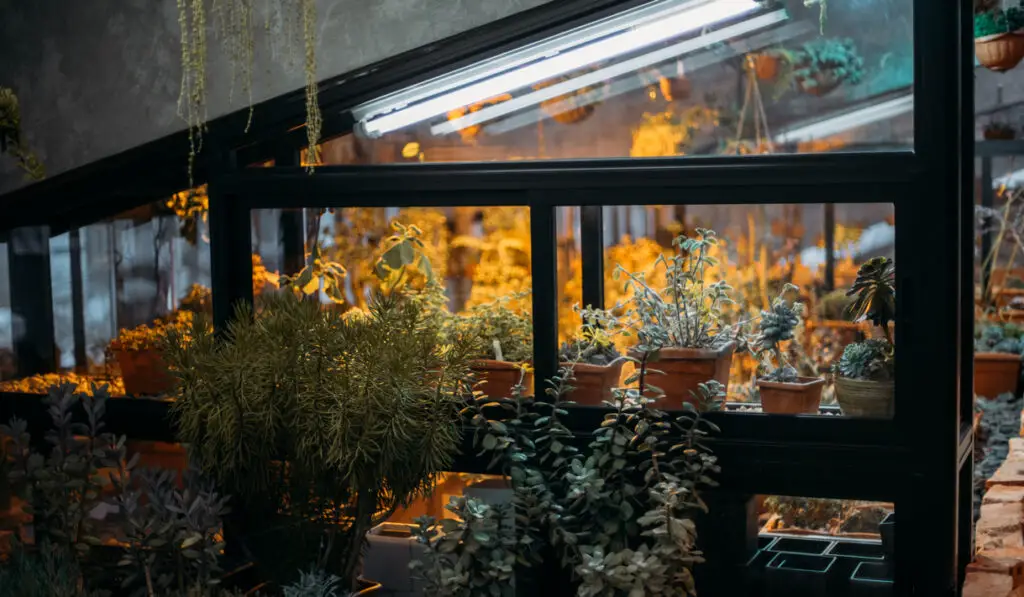



Hi Brock!
I can not thank you enough for your article! I live in Zone 4b. In winter, it is more of a 4a-3 with the wind chill and snow. Zone maps claim I live in 5b, but I have lived here my entire life (I am in my last chapter) and experienced the only THREE seasons we have, which are frozen, GROW fast, and immediately die.
Snow is a “four-letter word” that means S.h!t N.o O.ne W.ants
Now, we often change to Zone 5 in the summer, climate change depending.
NO ONE *EVER* PROVIDES LISTS OF WEEPING TREES FOR MY ZONE or COLDER!!!
**THANK YOU, THANK YOU, THANK YOU!!!**
Even exquisite flowering CHERRIES!!
I spend hours with my state university’s cooperatives extension, and THEY DO NOT create a list like yours. Again, THANK YOU!
Several of these that I added to my “add to my property” plan I have to SPECIAL ORDER from expert ARBOR GREENHOUSE!
I want these now! 🙂 I like these and want them to be at least halfway mature by the end of my mortgage in 6 years so I can get the Eff out of here and move to the west coast of warmth and sunshine!
I do not know if you are old enough to know Wayne’s World (You look very young.) But in the timeless words of Mike Myers, “I’m not worthy!”
Thank you, Brock.
Thank you for the kind words KC! I’m also in zone 5 so I know your pain all too well. 🙂
Does your blog have a contact page? I’m having problems locating it but, I’d like to shoot you an email. I’ve got some recommendations for your blog you might be interested in hearing.
It does! You can contact me directly at brock@biggergarden.com 🙂